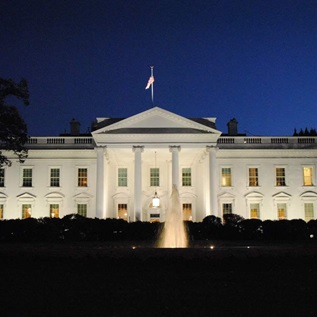22 States Raise Their Grades on Dental Care For Children Even in Tough Fiscal Times
The state that children call home can make a big difference in the health of their teeth. In this year's 50-state report card by the Pew Children's Dental Campaign, 27 states earned grades of an A or B, while 23 states and the District of Columbia received a C or lower grade. However, the 2011 grades for 22 states were higher than their 2010 grades, revealing that even in a time of fiscal distress, dental health policies can be improved.
More than 16 million U.S. children go without even basic dental care each year. Pew's report card, The State of Children's Dental Health: Making Coverage Matter, assesses states' ability to serve insured and soon-to-be-insured children.
By 2014, an additional 5.3 million kids will secure dental coverage under the federal health care reform law enacted in 2010. To make coverage matter, expanded insurance must be coupled with state policies that meaningfully improve children's access to care. States that currently lack sound dental health policies are unlikely to ensure dental care reaches these additional kids.
The 2011 Pew report card, produced with support from the W.K. Kellogg Foundation and the DentaQuest Foundation, reveals simultaneous signs of hope and concern:
-
Of the 22 states raising their grades from 2010, six of them have improved by at least two letter grades: Arkansas, Delaware, Massachusetts, Minnesota, Utah and West Virginia.
-
Only seven states achieved A grades: Alaska, Connecticut, Maine, Maryland, Massachusetts, Minnesota and South Carolina. Of these states, Maryland was the only state to meet seven policy goals, and no state met all eight.
-
Fourteen states and the District of Columbia failed to improve from the C, D or F grades that they earned in Pew's 2010 report.
-
Grades dropped in six states: Indiana, Iowa, Montana, New Mexico, North Carolina and Rhode Island. This decline was driven mostly by Medicaid reimbursement rates that have not kept pace with the growth in dentists' fees.
-
States achieving higher grades made this progress primarily by reimbursing physicians for preventive dental services, expanding water fluoridation and increasing the percentage of Medicaid-enrolled children who receive care.
-
Six of the nine states that earned an F in Pew's 2010 report card raised their grades this year—two of those states (Arkansas and Delaware) managed to improve by at least two letter grades. Only three states received a second consecutive F (Florida, Hawaii and New Jersey), while Indiana and Montana tumbled into the F range.
"Twenty-two states were able to raise their grades even though most of them faced daunting budget shortfalls," said Shelly Gehshan, director of the Pew Children's Dental Campaign. "This shows that states have smart, cost-effective ways to make progress without imposing a heavy burden on taxpayers."
"Many states earn high marks for effort, but results have fallen short of what they need to be," says Sterling K. Speirn, president and CEO of the W.K. Kellogg Foundation. "We need to support more innovative approaches to addressing the gap that leaves too many children and families without dental care."
"This report gets people thinking about what they can do on behalf of kids and their oral health," said Ralph Fuccillo, president of the DentaQuest Foundation. "There is a great opportunity for government and the private sector to work together to remove barriers to care, promote prevention and engage policy makers in making oral health a priority."
In The State of Children's Dental Health: Making Coverage Matter, Pew grades states on an A-through-F scale based on their performance in meeting eight policy benchmarks for children's dental health:
-
Having sealant programs in at least 25 percent of high-risk schools
-
Allowing a hygienist to place sealants in a school sealant program without requiring a dentist's prior exam
-
Providing optimally fluoridated water to at least 75 percent of residents who are served by community water systems
-
Meeting or exceeding the 2007 national average (38.1 percent) of Medicaid-enrolled children ages one to 18 receiving dental services
-
Paying dentists who serve Medicaid-enrolled children at least the 2008 national average (60.5 percent) of dentists' median retail fees
-
Reimbursing medical care providers through its state Medicaid program for preventive dental health services
-
Authorizing a new type of primary-care dental provider
-
Submitting basic screening data to the national database that tracks oral health progress
"The fact that no state met all eight of our benchmarks shows that even the A states can do better," Gehshan stated. "An A does not stand for 'all done.' It means a state has the key ingredients in place, but it still needs to monitor progress and explore new ways to improve children's access to dental care.'"
Lack of access to basic dental care has far-reaching consequences. Children who do not receive appropriate dental care are more likely to miss school days and fall behind academically. In California alone, more than half a million children ages five to 17 were absent at least one school day in 2007 due to a toothache or other dental concern. Poor dental health also undermines our nation's military readiness. In 2008, 52 percent of new recruits were found to be Class 3 in "dental readiness"—meaning they had oral health problems needing urgent attention that would delay overseas deployment.
To access the full report, the methodology and the fact sheets for all 50 states and the District of Columbia, visit pewcenteronthestates.org/makingcoveragematter.
Watch the interview with Shelly Gehshan.
Pew Center on the States
The Pew Center on the States is a division of The Pew Charitable Trusts that identifies and advances effective solutions to critical issues facing states. Pew is a nonprofit organization that applies a rigorous, analytical approach to improve public policy, inform the public and stimulate civic life. www.pewstates.org.











